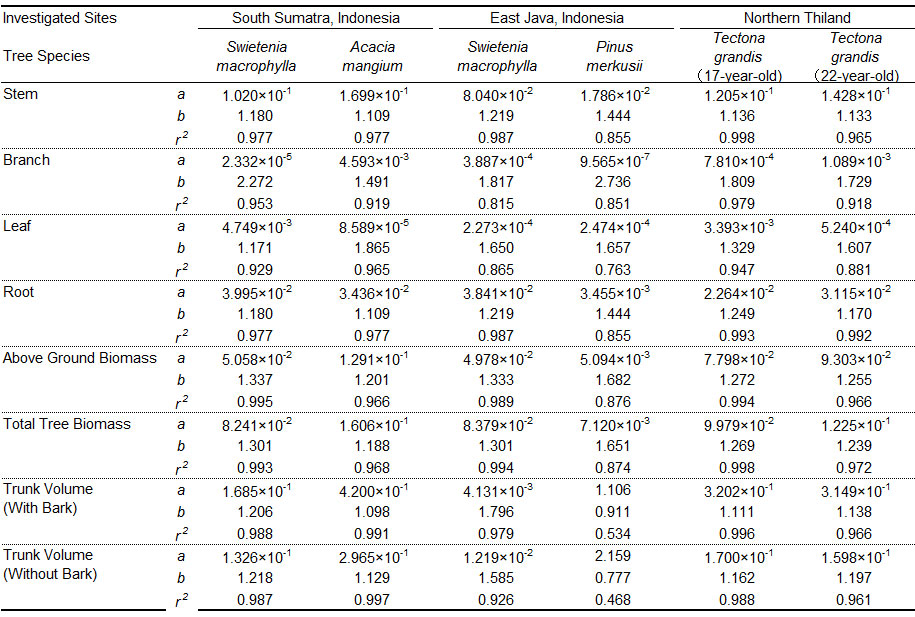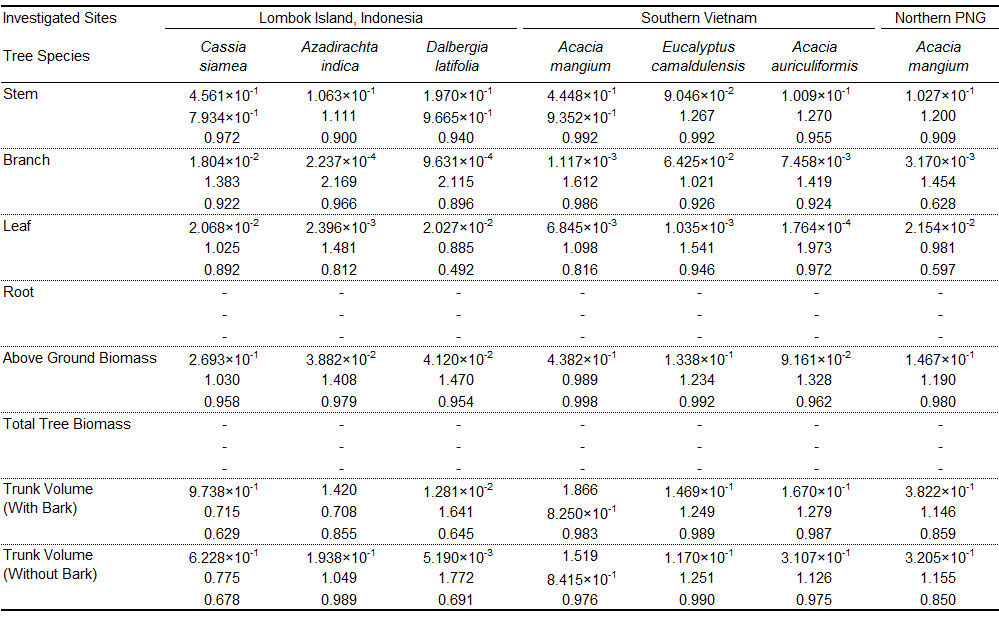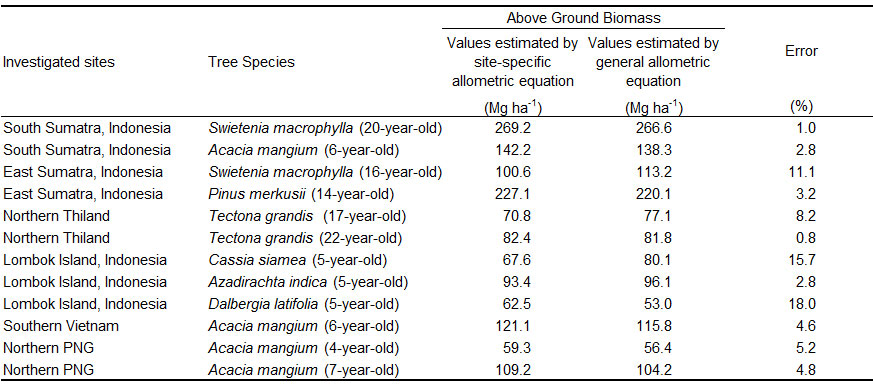General Allometric Equations for Estimating Biomass in Artificial Forests in Tropics
|
Estimation of carbon sequestration in artificial forests is a key section in Project Design Document (PDD) in A/R CDM under the Kyoto Protocol. We have many information on biomass accumulation in Temperate or Cool Temperate forests through the biomass data after the International Biological Program (IBP). However, there has been comparatively few information in natural or artificial forests in the tropics. The situation might make difficulty to practice the A/R CDM. Biomass is ordinary estimated from the allometric equation in biomass to the parameters of diameter at breast height (DBH) and tree height (H) in individual sample trees and the equation is applying the tree census of DBH and H of the target stand. These equations are considered as site or species dependencies and it is said that the allometric equation have to build in each stand. On the other hand, there is the difficulty to make such allometric equation in each site and/or species in the tropics. In addition, measurements of tree height are quietly accurate in felled-tree, however, there might be large error in measuring H of a tree in a stand because of the difficulty to see the tree top of broad-leaved tree species. We consider the more accurate and simple biomass prediction and could present the general allometric equations with one parameter, DBH, in artificial forests in the tropics. Allometric equation is as follows; M = a (DBH2) b Where, M is subordinate variable; each organic matther, above ground biomass, or total of a tree, and a and b are coefficients. Each site or species depending allometric equation was shown in Table 1. General allometric equations from all sample trees in Table 1 were shown in Table 2. The general allometric relations might be quite well comparing with the biomass from the allometric equations based on the site or species (Table 3 and Figure 1). The general allometric equations might be widely applied to the artificial forests with the DBH up to about 40cm and general tree density from our sites in Table 1 if the tree census of DBH is carried out in the tropics. |
|
Table 1a Coefficients and regression function of allometric equations of each oargnic matter and trunk volume in each site
|
|
Table 1b Coefficients and regression function of allometric equations of each oargnic matter and trunk volume in each site
|
|
Table 2 Coefficients and regression function of general allometric equationsof each oargnic matter and trunk volume
|
| Table 3 Above fround biomass estimated by site-specific allimetric equation and general equation, and error of both values
|

Figure 1 Above fround biomass estimated by site-specific allimetric equation and general equation. Line in figure shows y = x. |
Reference
Hiratsuka, M.; Toma, T.; Yamada, M.; Heriansyah, I.; Morikawa, Y. (2004) A general allometric equation for estimating biomass in Acacia mangium plantations. In: Proceedings of the 2003 International Conference on Tropical Forests and Climate Change: Carbon Sequestration and Clean Development Mechanism: held on 21-22 October, 2003, Traders Hotel, Manila, Philippines.
<Papar>
Hiratsuka, M.; Yamanoshita (Yamada), M.; Morikawa, Y. (2010) The General Allometric Equations for Estimating Biomass in Artificial Forest in the Tropics. Japanese Journal of International Forest and Forestry. No.77: 48-53.
Copyright (C) 2010 Environmental Ecology Laboratory. All Rights Reserved.



